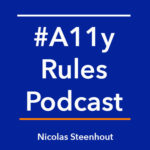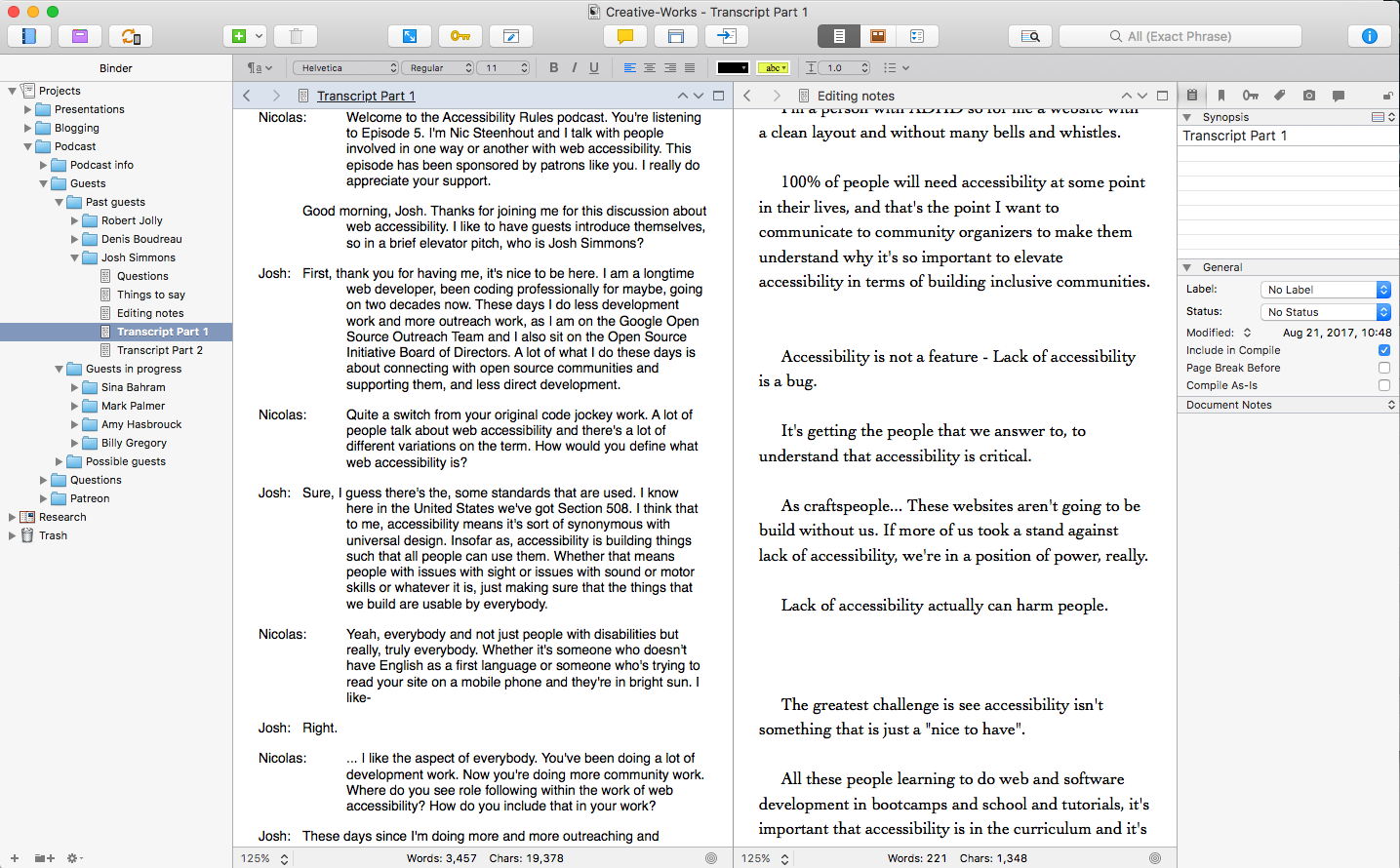Using Scrivener for podcasting
 ](https://www.patreon.com/steenhout/)
](https://www.patreon.com/steenhout/)
I’ve been using Scrivener for a while now to organize my writing and other creative projects. The more I use it and learn about it, the more powerful I find it. I am having conversations around web accessibility with people involved, directly or not, with web accessibility and I am podcasting these conversations as the A11y Rules Podcast. I’m relying on Scrivener to organize the podcast. I thought it might be interesting for some of you to learn how I use the app.
Scrivener
I imagine that if you are reading this post, you are likely either interested in Scrivener, or in Podcasting. I won’t go on at length about Scrivener, but a short introduction is in order for those who aren’t familiar with the software. It is described as a “complete writing studio”. You can easily organize content, research, resources, etc. It was created by writers, for writers. There are several modes, including a distraction-free mode which I’ve not used myself but that I heard many people swear by.
Project organization
 This is what Scrivener looks like when I work on podcasts.
This is what Scrivener looks like when I work on podcasts.
I organized my podcast project within my “Creative works” Scrivener projects. I prefer to use one over-arching projects because there is (or will be) a lot of overlap between my podcasts, my blog posts, and my conference presentations. Each creative project has a top folder, with second tier folders to organise a bit more. The podcast project has the following folder structure:
- Podcast
- Podcast info
- Guests
- Past guests
- Guests in progress
- Possible guests
- Questions
- Patreon
Podcast info
This folder contains information and text for my intro, my outro, details about music, and the standard text I use for my guest notification.
Questions
The Questions folder has only one document, which are a bunch of ideas for questions to be asked.
Patreon
The Patreon folder includes information about my Patreon page: content for the project page itself, details for the introduction video, the reward tiers, that kind of stuff.
Guests
The Guests folder is where the “meat” resides. I’ve created sub-folders below that: Past guests, Guests in progress, and Possible guests. The Past guests folder allows me to keep all the info that I am not working on currently out of sight but easily accessible. The Possible guests folder allows me to jot down ideas of who I should speak to, and include contact details, or referee, or any other information I need about that person.
The Guests in progress has a folder for each guest, labelled with the person’s name. In that folder, I have a document for questions I’m planning to ask the guest; a document with the bits I’m going to say during the podcast (e.g. The intro, welcoming the guest, etc); an editing notes document; and one or two transcripts documents.
Before the podcast
I make sure to review my bank of questions and select those that will be most appropriate for each guest. For instance, I wouldn’t ask what specific accessibility barriers a guest without disabilities has encountered, or I wouldn’t ask a designer about the intersection of security and accessibility.
If I think of a question that isn’t in my bank of question, I add it there as well for future use.
During the podcast
I use the vertical split layout view to have two documents side by side, which allows me to have one pane with the questions I prepared for each specific guest, and another pane with the things I want to say for the intro and outro. This makes it really easy to keep track of what I want to say.
- Previous: Conversation with Denis Boudreau
- Next: Conversation with Josh Simmons